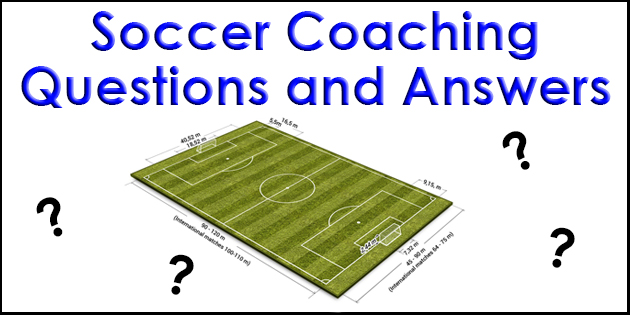We regularly discuss problems, ideas and solutions with our community of soccer coaches here at Coaches Training Room. Here’s a selection of the most frequently asked coaches questions with our answers:
Q: Suggestions on how to deal with talented, but ADHD boys? (pre-teens also facing social and hormonal changes/issues
A: Offer roles within the team, for example player 1’s job is to bring a spare water/ball to practice in case a player forgets, Player 2’s role is to assist in setting up the practice area. These small exercises give players a feeling of importance within the team, and also help build friendships and a feeling of belonging. Try to channel players’ excess energy into positive tasks, for example, if a player is being disruptive: “John, can you help me collect the cones?” or “John, I need your help to set up the area” sounds like an important role to help you, whereas “John go and collect the cones” sounds like a punishment/chore and will likely be met with a negative response. You can take two players to do this task to share that feeling of importance and also avoid singling a player out for preferential treatment. (taking two players with disruptive energy in that session will probably result in more disruption, be careful how you go about this.) Players of this age will appreciate extra responsibility and keeping ADHD players focused on small tasks will help in keeping their attention. Keep coaching points short and to the point. Players who keep focus or make an improvement can be rewarded with extra “help coach” type of roles, other players will soon follow suit.
Q: The no 1 issue I have currently with my u14 soccer team is communication on the pitch. Any ideas on how to improve this?
A: Base your session around non communication. Start your passing session, for example, as you usually would, then enforce the rule where Players are NOT allowed to talk on the field. So during a passing game, no sounds allowed. How can they overcome this? Why is it difficult? encourage group discussion on this. Let’s assume players start waving their arms to get each others’ attention, the next stage would be to remove this, How can they communicate now? They would be left realistically with only eye contact, this will take some adjusting to, but with some perseverance it will encourage them to move into the line of a player in possession, showing for a pass (half the group with a ball and half without might be the best for this, to make sure there are plenty of passing.) Again, take time to discuss what was difficult, what went well? What could go better? Finally, allow players to communicate vocally only, what difference does this make? Then finish with all forms of communication allowed and finish with a game.
Q: I coach U9 and it’s hard for the players to keep positions on the pitch. They still seem to ball watch & follow the ball. When caught in possession we have a big spatial gap between midfield & defense and get caught with to many players attacking?
A: This is quite typical of the age group. It is quite easy to lose a midfield at this age as defenders defend, attackers attack and midfielders tend to gravitate towards the ball. This leaves gaps between attack and defense. Try to encourage players to attack/defend as a unit, defenders push up to support attackers and when your team doesn’t have the ball, attackers are the first line of defenders. This way the team moves as a unit and can attack or defend from wherever they are on the field.
The biggest challenge for me as a coach is getting the players to understand spacing. Our team has a tendency to bunch up.
Here’s a practical teaching aid:
– During conditioned games, if players start to bunch, throw an extra ball in. Shout when you do it the first few times to alert players, the ones with increased field awareness will look up, find the ball and possibly score an easy goal, one by one the rest will start to realize that when they bunch there will be space available (and possibly a free ball)
If you get to the stage where they can do this without a vocal cue, they’re well on their way!
Have you checked out our very popular Core Passing Pack yet?
Article By:
Mark Higginbotham
Co-Owner, Coaches Training Room


